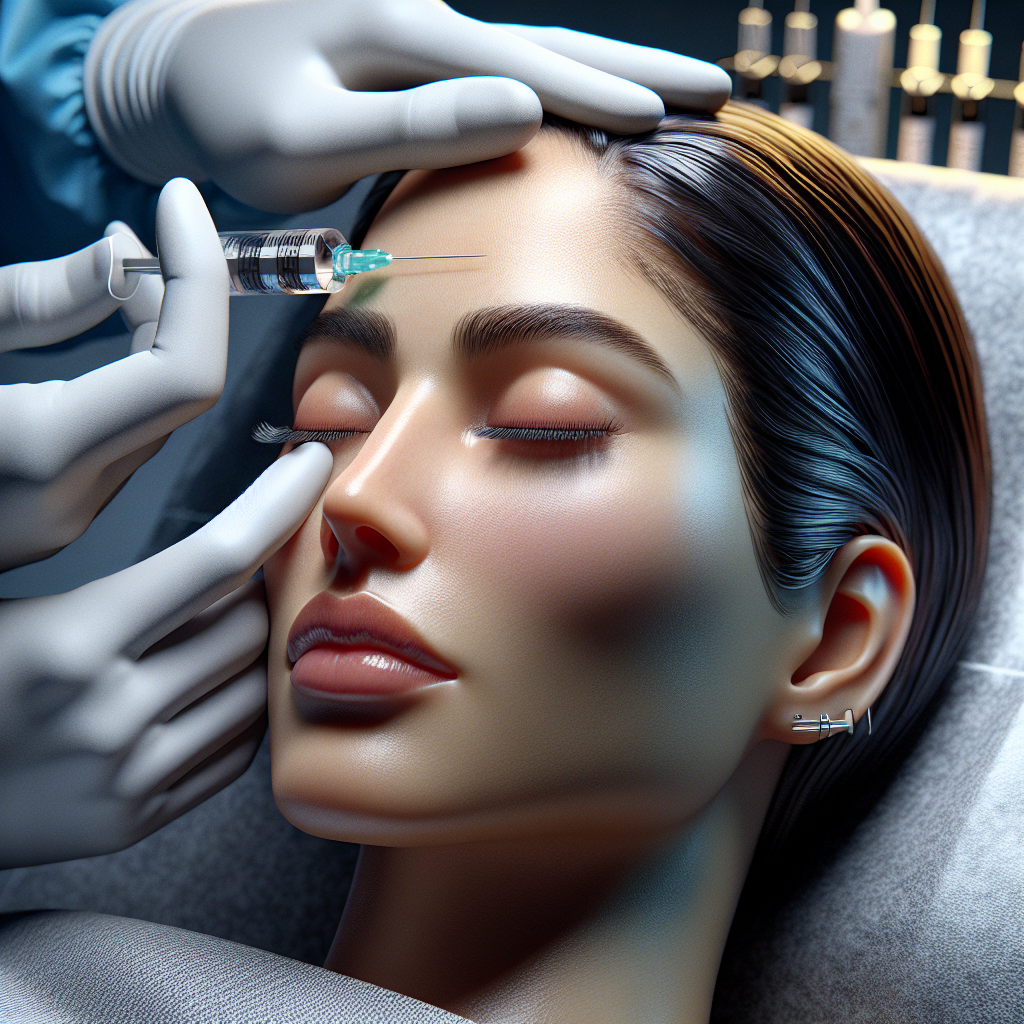Botox, well-known for its cosmetic applications, has emerged as a breakthrough treatment for chronic migraines. Approved by the FDA in 2010, Botox injections are sought after for their ability to reduce the frequency and severity of migraine attacks. For those who suffer from this debilitating condition, Botox offers a new hope and a potential pathway to a better quality of life.
Botox for migraines involves injecting small amounts of botulinum toxin into specific areas around the head and neck. These injections help to block the release of chemicals involved in pain transmission, thereby preventing migraine attacks before they start. Patients typically receive these injections every 12 weeks, and many report significant relief after just a few sessions.
Understanding the benefits and side effects of Botox is crucial for an informed decision. If you are considering this treatment, you're likely wondering, "What are the side effects of Botox injections for migraines?" Knowing the potential risks can help you weigh the pros and cons more effectively.
Book an appointment / free consultation or call 647-812-8752 for more info.
Common Side Effects of Botox Injections
While Botox injections for migraines are generally well-tolerated, it's important to be aware of the common side effects that some individuals may experience. These side effects are usually mild and temporary, resolving on their own within a few days to a week.
Common side effects include:
- Pain at the injection site: It's typical to feel some discomfort or pain where the injections were administered. This is usually short-lived and can be managed with over-the-counter pain relievers.
- Headache: Ironically, some patients might experience a mild headache following the treatment. This is typically temporary and less severe than a migraine.
- Neck pain: Some individuals report feeling stiffness or pain in the neck area after the procedure. Gentle stretching and rest can help alleviate this symptom.
- Flu-like symptoms: A few patients might experience symptoms such as fatigue, a slight fever, or a general feeling of being unwell. These symptoms are generally mild and pass quickly.
- Temporary muscle weakness: Since Botox works by affecting muscle activity, some patients might notice temporary muscle weakness in the areas around the injections.
These side effects are typically mild and transient, but it is essential to inform your healthcare provider about any discomfort or unusual symptoms you experience. Being aware of these common side effects helps in setting realistic expectations and prepares you for a smooth treatment experience.
Serious Side Effects to Consider

Although Botox injections for migraines are generally safe, it's crucial to be aware of the potential serious side effects, although they are rare. Recognizing these side effects early can help in seeking timely medical intervention.
Serious side effects to consider include:
- Allergic reactions: Some individuals may experience an allergic reaction to Botox, characterized by symptoms such as itching, rash, or difficulty breathing. If you notice these symptoms, seek medical attention immediately.
- Difficulty swallowing or breathing: In rare cases, Botox can spread beyond the injection site and affect muscles involved in swallowing or breathing. This requires urgent medical care.
- Drooping eyelids or eyebrows: Known as ptosis, this condition can occur if the Botox spreads to nearby muscles that control the eyelids or eyebrows. Though usually temporary, it can be quite bothersome and may require medical consultation.
- Severe muscle weakness: Some patients might experience generalized muscle weakness, which is more extensive than the expected localized weakness. This can affect daily activities and requires immediate medical evaluation.
- Vision problems: Issues such as blurred vision, double vision, or decreased eyesight may occur if the Botox affects the muscles around the eyes.
- Loss of bladder control: Though rare, some individuals might experience urinary incontinence following Botox injections. This side effect warrants a discussion with your healthcare provider.
If you experience any of these serious side effects, it is essential to seek medical attention promptly. Being informed about these potential risks ensures that you can take quick action if needed, thereby minimizing any adverse effects.
Long-Term Effects of Botox for Migraines

Understanding the long-term effects of Botox injections for migraines is vital for anyone considering this treatment. While Botox is generally safe when administered by a qualified medical professional, there are several long-term considerations to keep in mind.
One of the primary long-term effects is the potential for developing resistance to Botox. Over time, the body may produce antibodies against the botulinum toxin, making the injections less effective. This resistance can lead to the need for higher doses or alternative treatments.
Another long-term effect is the possible muscle weakening in the treated areas. While Botox works by temporarily paralyzing muscles to prevent migraine triggers, prolonged use may lead to atrophy or weakening of these muscles. This can affect muscle function and appearance, particularly in the face.
There is also the possibility of experiencing cumulative side effects. Even though each injection session poses minimal risk, the likelihood of side effects such as bruising, swelling, or mild pain can accumulate with repeated treatments.
Some patients may experience psychological impacts over the long term. The necessity of ongoing treatments and the stress of managing chronic migraines can take a toll on mental health, leading to anxiety or depression.
Lastly, it’s important to consider the financial implications of long-term Botox treatments. Ongoing injections can become costly, and not all insurance plans cover this type of migraine treatment.
Understanding these long-term effects can help you make a more informed decision about whether Botox is the right treatment option for your migraines. Always consult with your healthcare provider to discuss any concerns and to monitor your progress closely.
Managing Side Effects and Risks

While Botox injections for migraines can offer significant relief, managing side effects and risks is crucial for a successful treatment experience. Understanding how to handle these issues can make the difference between a positive outcome and a challenging one.
Preparation is key. Before undergoing Botox treatment, it’s essential to have a thorough consultation with a qualified medical professional. Discuss your medical history, any allergies, and other medications you may be taking. This can help identify potential risks and tailor the treatment to your specific needs.
Immediately after the injection, you might experience mild side effects such as bruising, swelling, or slight pain at the injection sites. Applying a cold compress can help reduce swelling and alleviate discomfort. Over-the-counter pain relievers like acetaminophen can also be effective, but always consult your doctor before taking any medication.
For more serious side effects, such as muscle weakness or vision problems, it’s crucial to act swiftly. Contact your healthcare provider immediately to discuss your symptoms and receive appropriate care. These side effects are rare but should not be ignored.
To minimize long-term risks, it’s important to follow a consistent treatment plan and maintain regular check-ups with your healthcare provider. Monitoring your progress allows for adjustments in dosage or treatment frequency, which can help mitigate potential long-term issues like muscle weakening or antibody resistance.
Healthy lifestyle choices can also play a role in managing side effects. Staying hydrated, maintaining a balanced diet, and incorporating stress-reducing activities like yoga or meditation can support overall well-being and enhance the effectiveness of Botox treatments.
By taking these steps, you can better manage side effects and risks, ensuring that your journey with Botox for migraines is as smooth and effective as possible.
Consulting with a Medical Professional
When considering Botox injections for migraines, consulting with a medical professional is a critical step to ensure safe and effective treatment. A qualified healthcare provider can offer personalized advice, taking into account your unique medical history and the specifics of your migraine condition.
During the consultation, your doctor will conduct a comprehensive assessment to determine if Botox is the right treatment for you. This includes reviewing your migraine history, identifying any potential triggers, and discussing your overall health. The goal is to create a tailored treatment plan that maximizes benefits while minimizing risks.
Open communication is key during this process. Be sure to discuss any concerns or questions you may have about the procedure, side effects, and aftercare. Your doctor can provide detailed information on what to expect, helping you to feel more confident and informed about your decision.
Additionally, a thorough consultation allows your healthcare provider to address any specific conditions that may affect the treatment’s efficacy. For instance, if you have underlying health issues or are taking other medications, these factors will be considered to ensure that Botox injections are safe and suitable for you.
Follow-up appointments are equally important. Regular check-ups with your medical professional will help monitor your progress and make any necessary adjustments to your treatment plan. This ongoing support ensures that you receive the maximum benefit from Botox injections while keeping potential side effects in check.
Remember, an informed patient is an empowered patient. By taking the time to consult with a medical professional, you’re making a proactive choice for your health and well-being. Book an appointment / free consultation or call 647-812-8752 for more info. Your journey to migraine relief starts with a single step.
